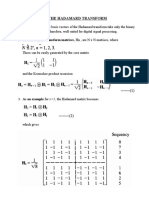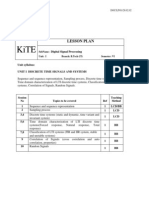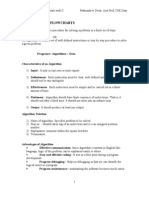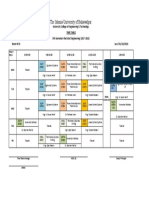0% found this document useful (0 votes)
268 views3 pagesClassification of The Signals
Signals can be classified into several categories:
1) Continuous time signals are defined for all instants of time, like audio and video recordings, while discrete time signals are defined at discrete instants, such as monthly stock or GDP data.
2) Periodic signals repeat their values exactly after a fixed time period, whereas aperiodic signals do not repeat after a fixed period.
3) Deterministic signals have defined values at all times and can be described by a mathematical equation, while non-deterministic or random signals have uncertain values that require a probabilistic description.
Uploaded by
khalidCopyright
© © All Rights Reserved
We take content rights seriously. If you suspect this is your content, claim it here.
Available Formats
Download as DOCX, PDF, TXT or read online on Scribd
0% found this document useful (0 votes)
268 views3 pagesClassification of The Signals
Signals can be classified into several categories:
1) Continuous time signals are defined for all instants of time, like audio and video recordings, while discrete time signals are defined at discrete instants, such as monthly stock or GDP data.
2) Periodic signals repeat their values exactly after a fixed time period, whereas aperiodic signals do not repeat after a fixed period.
3) Deterministic signals have defined values at all times and can be described by a mathematical equation, while non-deterministic or random signals have uncertain values that require a probabilistic description.
Uploaded by
khalidCopyright
© © All Rights Reserved
We take content rights seriously. If you suspect this is your content, claim it here.
Available Formats
Download as DOCX, PDF, TXT or read online on Scribd
/ 3










































































